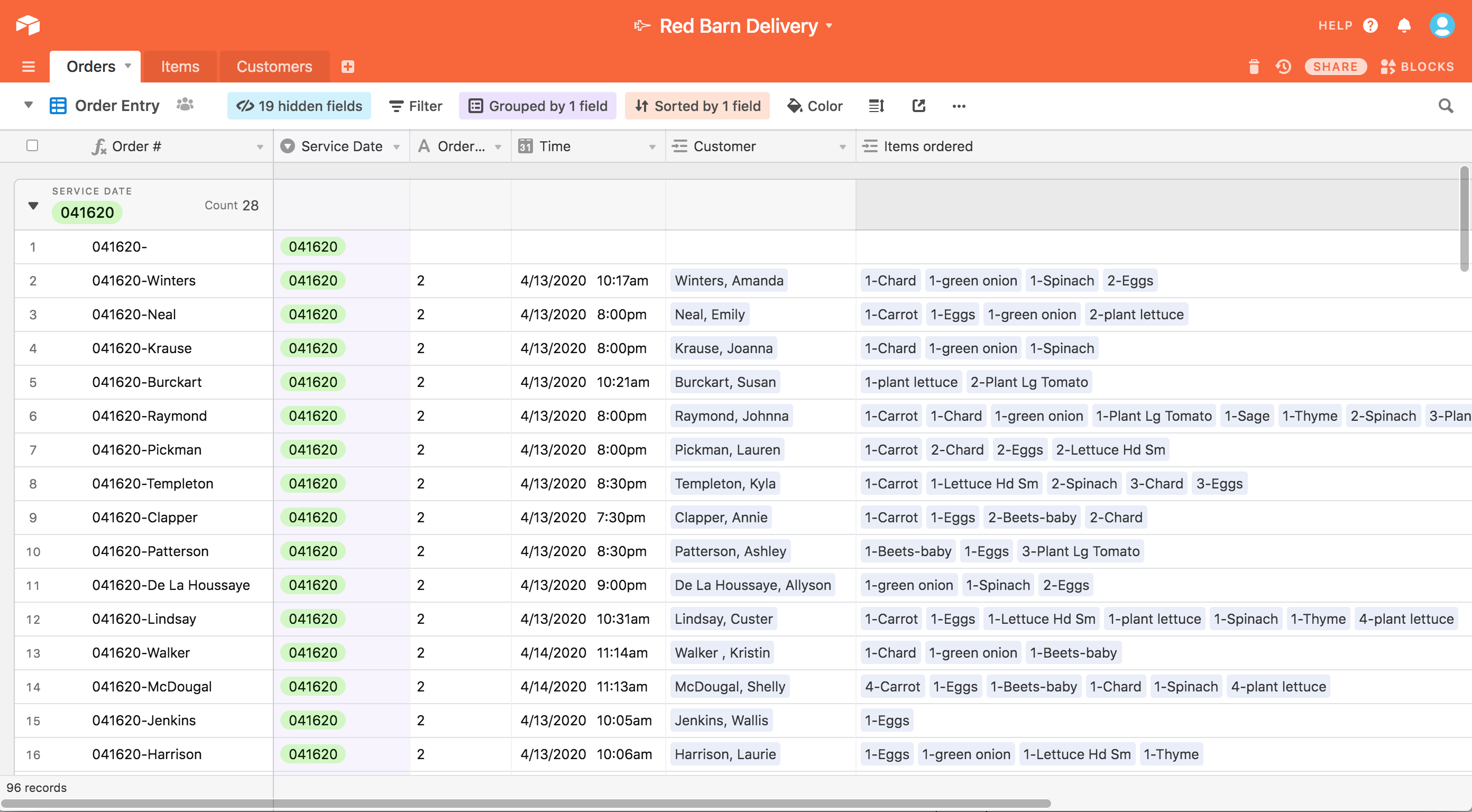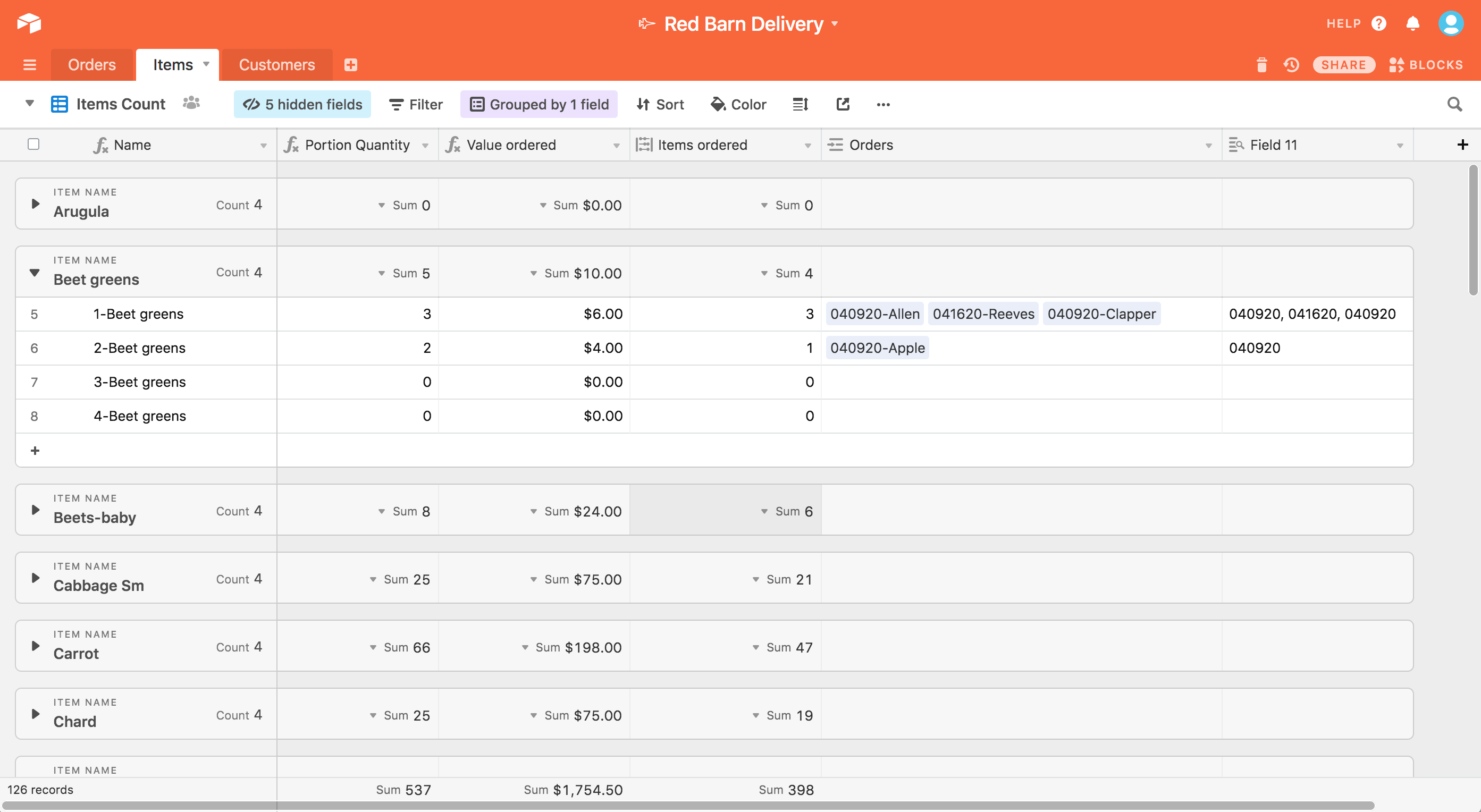I’ve been having a great time learning to use Airtable, and imagine I am just beginning to touch on its usefulness. So glad to see an active community of knowledgeable users who are willing to help others learn.
We are using airtable to manage weekly vegetable orders on a farm. I have three tables, one with customer information, one with items on offer, and one for order entry, and various order sorting and packing.
The things I need this base to accomplish are:
Customer management
Order management
Item management
Things to note:
We complete all orders weekly. There are no holdovers from one week to the next.
We harvest to order, so we need to know how many of each item to harvest based on orders.
It is working well with one exception. In order to calculate item totals, I have a link to the orders table that populates with all order records which contain each item. I then use a count field to count those records to know how many of that item were ordered. This works great for one week of ordering.
The problem is: I have not found a way to sort, group, or filter the items table to show total item quantities by week (fulfillment date). I need a way to remove previous orders from the total without losing the information in the orders table (where it is easy to group orders by date).
It’s basically like I need to be able to look up a specific group in a specific view which would allow me to group by date in the orders table, then sort so I only see that group in the items view. But I don’t think it works that way so I need a work around.



